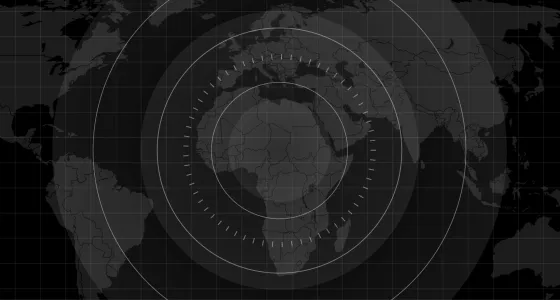Driving Factors
Conflict, economic collapse, climate shocks and water scarcity are pushing Yemen towards famine. Years of war and displacement have eroded livelihoods, limiting access to basic health and nutrition services. As is more often the case, women and girls have been disproportionately affected. Now recovery efforts are stalling with rising food prices, currency devaluation and economic fragmentation pushing millions deeper into crisis. The latest floods this August are a stark example of how climate change is limiting the availability of food, destroying farmland, livestock, and other essential sources of sustenance.
While conditions are challenging across Yemen, in northern governorates, the ongoing detention of humanitarian staff has further obstructed lifesaving aid operations. The restriction of movement imposed on female Yemeni aid workers, which prevents them from travelling without male guardians, also continues to impede humanitarian delivery and limits the ability of vulnerable women and girls to access humanitarian services.
Unprecedented global aid cuts in 2025 have further driven hunger and child malnutrition to deadly levels. Funding cuts have forced the shutdown of over 2,800 lifesaving treatment services, representing nearly half of all lifesaving nutrition programming. Nearly all supply pipelines, which serve millions of malnourished children, as well as pregnant and breastfeeding women, are under severe strain. Despite rising needs, Yemen’s food security and nutrition responses are at its lowest in a decade, with barely 10 percent of funding needs met.
Taking Effective Solutions Further
Over the past decade, international and local organisations in Yemen have helped prevent famine from taking hold and saved countless lives. With the support of donors we have restored irrigation systems, provided cash assistance and vocational training to help families rebuild their livelihoods. These efforts have kept children nourished, supported parents to earn an income, and revived small-scale farming. However, without sustained, long-term investment, the tide will turn. More districts are at imminent risk of sliding into catastrophic levels of malnutrition[9] without urgent funding and supplies.
Donors Must Step Up
As the world marks World Food Day, the international community must scale up support for proven solutions to allow humanitarian actors to tackle Yemen’s worsening hunger crisis, protect children and families and prevent increased suffering. Equally important is addressing the root causes of Yemen’s food insecurity: an end to the conflict which requires meaningful progress in the peace process and robust recovery efforts, including stabilisation of the economy and investments in climate-resilient agriculture and livelihoods. Only through a combined effort - linking immediate life-saving support with long-term political and economic solutions - can Yemenis rebuild their lives.
We call on:
- Donors and international partners to fund immediate food security and livelihood needs identified in the Food Security and Agriculture Cluster hyper-prioritised plan, with a focus on hotspot districts and the restoration of critical supply pipelines. Support will enable lifesaving nutrition services, including the continued operation of therapeutic feeding centres and access to essential treatment supplies.
- Donors and international partners to increase investment in national organizations as a critical effort towards advancing the localization agenda, while ensuring communities are supported faster and more effectively.
- Donors and international partners to jointly advocate for principled humanitarian access across Yemen, facilitating the timely delivery of targeted and complementary food, nutrition and cash assistance.
- Donors and international partners to urgently ensure that humanitarian programs across Yemen integrate measures to safeguard vulnerable communities, particularly women and children, addressing the rising risks they face due to the escalating hunger crisis, including forced child labour, early marriage, and school dropout.
- Development donors to invest in robust disaster risk management strategies. Resilient infrastructure and community preparedness initiatives, including social transfers, are critical to minimize risks of climate change and protect the most vulnerable populations.
- Parties to the conflict must facilitate principled and unhindered humanitarian access to ensure the timely delivery of lifesaving assistance, and the recovery of their communities from severe hunger and malnutrition. All arbitrarily detained humanitarian workers should be released, and the safety and continuity of humanitarian operations should be ensured.
- Parties to the conflict, with the support of the international community, to take steps towards peace efforts including economic relief measures - such as resuming public sector salary payments, restoring banking operations, and curbing currency depreciation - to reduce the drivers of hunger and enable families to afford food and basic needs.
Signed by:
- Action Contre la Faim (ACF)
- Action for Humanity
- Aden Foundation for Arts and Sciences (ADEN-FAS)
- Al-Ahlam Foundation for Developmental Medicine
- All Girls Foundation For Development (AGF)
- Al-Nabras Foundation for Human Development
- Altwasul for Human Development
- CARE
- Child and Youth Protection Foundation (CYPF)
- Center For Civilians In Conflict (CIVIC)
- Danish Refugee Council (DRC)
- Deem for Development Organization
- Direct Aid (DA)
- Dorcas
- FARHM Network for Peace and Development (network of 10 Yemeni organisations)
- Field Medical Foundation (FMF)
- For Human Development Foundation (FHD)
- Generations Without Qat (GWQ)
- Geneva Call
- Human Access for Partnership and Development
- International Medical Corps
- International Rescue Committee (IRC)
- INTERSOS
- Joud Al Ata a Foundation Humanity Development (JAFHD)
- Médecins du Monde (MdM)
- Medglobal
- Mona Relief and Development Organization (Mona Relief)
- Norwegian People’s Aid (NPA)
- OXFAM
- Relief & Development Peer Foundation (RDP)
- Relief International (RI)
- Save the Children
- Secours Islamique France (SIF)
- Society for Humanitarian Solidarity (SHS)
- Solidarités International (SI)
- SOUL for Development (SOUL)
- War Child Alliance

